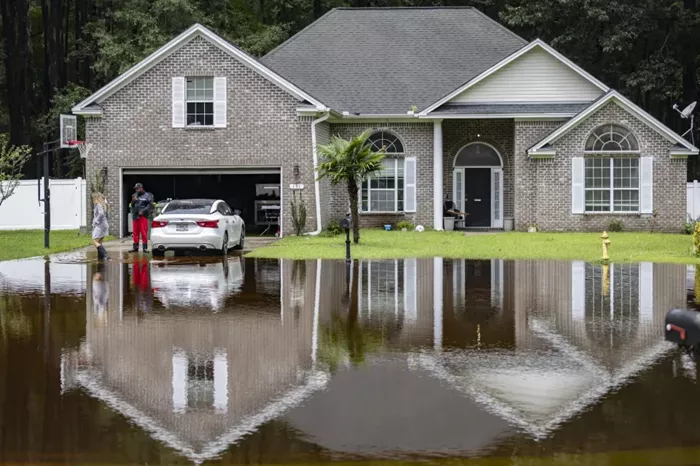Tropical Storm Debby made a second landfall in South Carolina early Thursday, bringing the threat of heavy rain and flooding along the East Coast, with impacts expected as far north as Vermont by the weekend.
The National Hurricane Center reported that Debby came ashore near Bulls Bay, South Carolina, and is expected to continue moving inland. The storm, which first made landfall as a Category 1 hurricane on Florida’s Gulf Coast earlier this week, has since weakened to a tropical storm with sustained winds of 50 mph (80 kph).
Flooding Concerns Escalate Across the Carolinas
Significant flooding is anticipated in parts of eastern South Carolina and southeastern North Carolina, with forecasts predicting an additional 3 to 9 inches (8 to 23 centimeters) of rain through Friday. The National Weather Service office in Charleston also confirmed that Debby had spawned four tornadoes.
In the community of Huger, about 15 miles (24 kilometers) northeast of Charleston, residents like Gene Taylor are no strangers to flooding. As high tide passed, Taylor waited for water to drain from his home along French Quarter Creek, having already moved belongings to higher ground in anticipation. This marks the fourth time in nine years that Taylor’s home has been inundated by floodwaters.
“To save everything, we’ve learned from the past it’s better be prepared for the worst. And unfortunately, I think we got it,” Taylor lamented.
A few houses down, Charles Grainger faced a similar situation, with about 8 inches (20 centimeters) of water flooding his home. “Eight inches disrupts your whole life,” Grainger noted. “You don’t get used to it. You just grin and bear it. It’s part of living on the creek.”
Georgia Faces Dam Breaches and Rescues Amid Debby’s Wrath
In Georgia, Debby’s impact has been equally severe. At least four dams were breached northwest of Savannah in Bulloch County, where emergency teams rescued more than 75 people from floodwaters. Approximately 100 roads were closed, though no fatalities have been reported.
Bulloch County Commission Chairman Roy Thompson expressed his astonishment at the storm’s impact, stating, “I’m 78-plus years old and have never seen anything like this before in Bulloch County.”
Residents in Pooler, Georgia, west of Savannah, are reliving the devastation they experienced during Hurricane Matthew in 2016. Despite being located 30 miles (50 kilometers) inland, the neighborhood continues to suffer from drainage issues that have persisted for over a decade, exacerbating the effects of tropical flooding.
Storm’s Reach Extends to the Northeast and Great Lakes
Debby’s influence wasn’t confined to the Southeast. The storm’s moisture strengthened another weather system on Tuesday evening, leading to severe thunderstorms across the Great Lakes, New York, and New Jersey. In New Jersey alone, up to 6 inches (15 centimeters) of rain fell in less than four hours, causing flash flooding and prompting water rescues.
New York City officials, bracing for potential flash floods, deployed drones with loudspeakers to warn residents in basement apartments to be prepared to evacuate. Meanwhile, severe weather left nearly 330,000 customers without power in Ohio, where tornadoes were confirmed.
States of Emergency and Preparations Underway
South Carolina Governor Henry McMaster warned that the state is only entering the second phase of Debby’s impact, with the potential for more severe flooding next week if heavy rain falls upstream in North Carolina. Both North Carolina and Virginia have declared states of emergency, while Maryland issued a state of preparedness.
The storm has claimed at least six lives so far, with five fatalities resulting from traffic accidents or fallen trees and the sixth involving a man whose anchored sailboat partially sank in Gulfport, Florida. As Debby continues its trek up the East Coast, residents are urged to remain vigilant and prepared for further weather disruptions.
Related topics:
- How To Protect Portable Generator From Rain
- How To Wire A Generator To A House Panel
- How To Run A House Off A Generator

